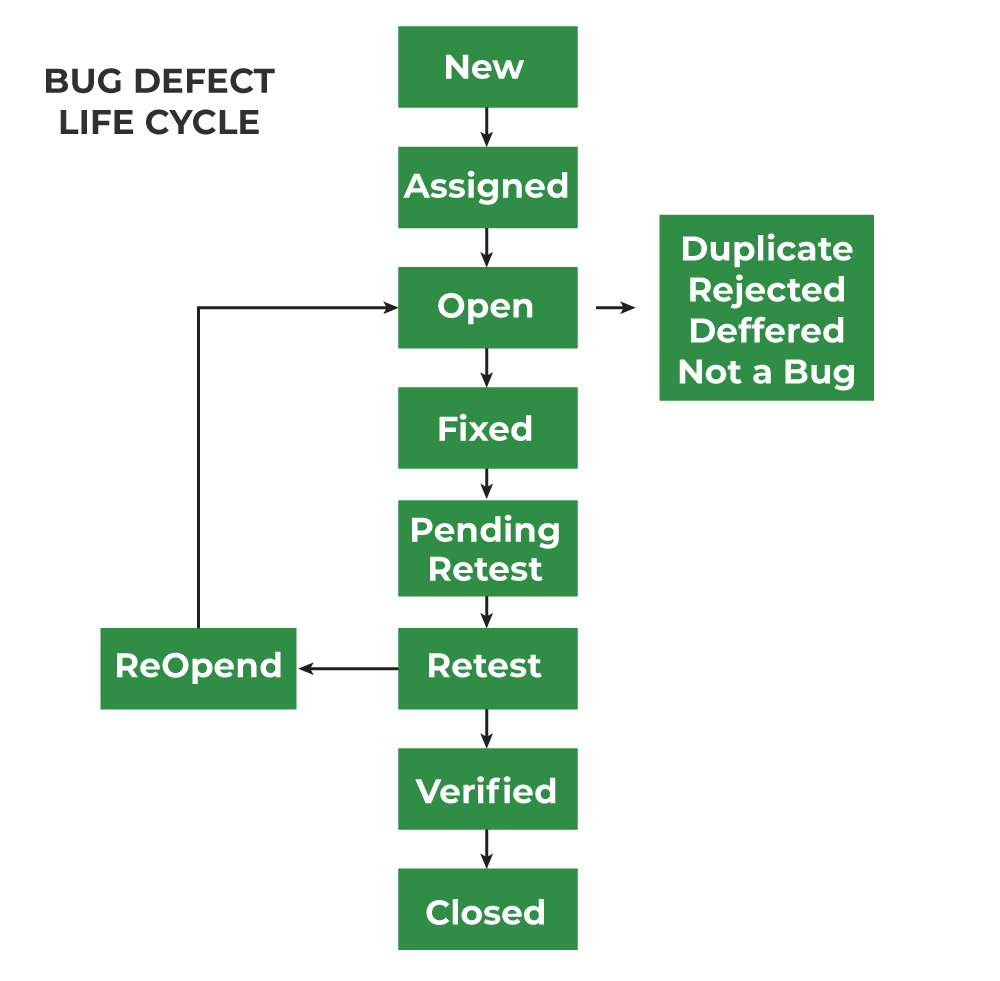Technology
Software Testing: Principles and Stages Simplified
By Dwinner ||
8 mins ||
5 March, 2025
In the world of software development, testing is not just a phase but a fundamental activity that ensures the success of a project. Effective software testing helps to identify and rectify issues, ensuring that the final product meets user expectations and performs as intended. This guide explores the essential aspects of software testing, including its principles, the distinction between Quality Assurance (QA) and Quality Control (QC), various testing stages, requirements attributes, and the bug life cycle.
1. Core Testing Principles 🧩
Understanding the core principles of software testing can significantly enhance the effectiveness of your testing efforts:
- Early Testing: Testing should begin as early as possible in the development lifecycle. Early testing helps in identifying defects at a stage where they are less costly to fix. This principle underscores the importance of integrating testing activities into the development process from the start.
- Defect Clustering: This principle suggests that a small number of modules often contain the majority of the defects. Therefore, focusing your testing efforts on these high-risk areas can be more efficient and effective. Understanding where defects are likely to cluster helps in prioritizing testing activities.
- Pesticide Paradox: Running the same set of tests will not keep finding new defects. This principle emphasizes the need for regularly updating and diversifying test cases to uncover new issues and adapt to changes in the software.
- Testing Shows Presence of Defects: Testing can demonstrate the presence of defects but cannot guarantee that all defects have been found. It is essential to understand that testing aims to find defects rather than ensuring a defect-free product.
- Absence-of-Errors Fallacy: Even if no defects are found, it does not mean the software is ready for release. The software may still not meet user needs or business requirements. Testing should focus on ensuring that the software meets the intended purpose and user expectations.
2. Quality Assurance (QA) vs. Quality Control (QC) ⚙️ 🔍
To ensure the quality of software, it’s crucial to understand the distinction between Quality Assurance (QA) and Quality Control (QC):

- Quality Assurance (QA): QA is a proactive process aimed at improving and establishing processes to prevent defects. It involves setting up quality standards, process improvements, and ensuring that best practices are followed throughout the development lifecycle. QA focuses on creating an environment and processes that support the creation of quality software.
- Quality Control (QC): QC, on the other hand, is a reactive process that involves identifying defects in the software. It is concerned with testing the actual product to find and fix defects. QC focuses on the detection of defects after the product has been developed, ensuring that the final product meets quality standards.
3. Testing Stages 🔬
Software testing is a multi-stage process, each stage focusing on different aspects of the application:
- Unit Testing: Unit testing involves testing individual components or modules of the software to ensure they work as intended. This stage is crucial for validating the functionality of specific pieces of code and is typically performed by developers.
- Integration Testing: This stage tests the interaction between different modules or components. The goal is to ensure that integrated components work together correctly and that data is passed accurately between them.
- System Testing: System testing involves testing the complete and integrated software system to verify that it meets specified requirements. This stage focuses on the overall behavior of the system and its compliance with user requirements.
- Acceptance Testing: Acceptance testing is conducted by end-users to validate that the system meets their needs and requirements. It is the final phase of testing before the software is released to production.
- Regression Testing: Regression testing ensures that new changes or enhancements to the software do not adversely affect existing functionality. It involves re-running previous test cases to verify that previously fixed issues remain resolved.
4. Requirements Attributes 📝
Effective software testing relies on well-defined requirements. Key attributes of good requirements include:
- Correctness: Requirements should accurately reflect the needs and expectations of users.
- Clarity: Requirements must be clear, unambiguous, and easily understandable.
- Completeness: All necessary requirements should be included to ensure the software meets its intended purpose.
- Consistency: Requirements should be free from conflicts and inconsistencies.
- Feasibility: Requirements should be realistic and achievable within the project constraints.
- Traceability: Each requirement should be traceable to corresponding test cases to ensure coverage and validation.
5. Bug Life Cycle 🐛
The bug life cycle outlines the various stages a defect goes through from identification to resolution:
New: The defect has been identified but not yet reviewed by the team.
Assigned: The defect is assigned to a developer or team member for fixing.
Open: The defect is actively being worked on.
Fixed: The defect has been fixed and is awaiting verification.
Verified: The fix has been verified by the testing team.
Closed: The defect is resolved and no further action is required.
Reopened: If the defect persists or reappears, it is reopened for further investigation and resolution.

Conclusion 📈
Software testing is a vital aspect of the software development process that helps ensure the delivery of high-quality products. By understanding and applying core testing principles, distinguishing between QA and QC, navigating through various testing stages, managing requirements effectively, and overseeing the bug life cycle, teams can significantly enhance the quality and reliability of their software. Effective testing not only helps in identifying and fixing defects but also ensures that the software meets user expectations and business objectives.
technologies
QA
software-testing
Featured Post
Tech SIM Swap Attacks: Analysis and Protective Mea...
Tech SIM Swap Attacks: Analysis and Protective Measures...
5 March, 2025
10 mins
Recent Post
Computer science has a racism problem: these resea...
Black and Hispanic people face huge hurdles at technology companies an...
How to Generate Astonishing Animations with ChatGP...
How to Generate Astonishing Animations with ChatGPT
The Web’s Next Transition
The web is made up of technologies that got their start over 25 years ...
Fundamentals of React Hooks
Hooks have been really gaining a lot of popularity from the first day ...
4 Easy Steps to Structure Highly Unstructured Big ...
4 Easy Steps to Structure Highly Unstructured Big Data, via Automated ...
10 Hottest New Apps for You to Get Ahead in Septem...
Here we are again, in a tribute to the amazing stream of ideas that pr...
Comparison of Top 6 Python NLP Libraries
Comparison of Top 6 Python NLP Libraries
Type Checking with TypeScript in React Native Navi...
📱 In the realm of mobile app development with React Native, ensuring ...
React 19 new features
React version 19 introduces a slew of groundbreaking features aimed at...
14 amazing macOS tips & tricks to power up your pr...
The mysteriOS Mac-hines keep having more hidden features the more you ...
How much does mobile app development cost
The cost of developing a mobile application can vary depending on seve...
React Native App Development Guide
DWIN, founded in 2015, has swiftly established itself as a leader in c...
Guide to Set Up Push Notifications in React Native...
1. Create a New React Native Project (if not already created)
Software Testing: Principles and Stages Simplified...
In the world of software development, testing is not just a phase but ...
Core Web Vitals: The Technical (Dark) Side of SEO
What You’ll Learn
Tech SIM Swap Attacks: Analysis and Protective Mea...
Tech SIM Swap Attacks: Analysis and Protective Measures
Core Web Vitals: The Technical (Dark) Side of SEO
What You’ll Learn
Top 20 mobile apps which nobody knows about…
In the vast ocean of mobile applications, some remarkable gems often g...